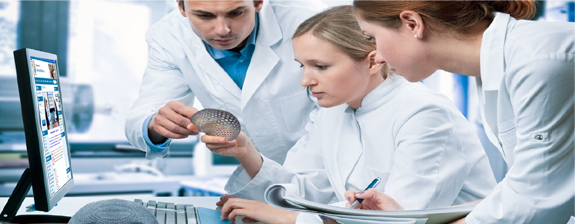Background- Chlorohexidine is commonly used to disinfect tooth sockets. No study is available on efficacy of photodynamic therapy as a disinfectant of implants placed in infected sockets in this region. Aim- To study effect of photodynamic therapy on osseointegration of immediate implants placed in infected sockets. Methods- The socket in Group A was debrided by Chlorohexidine. The other socket in Group B was disinfected by a photodynamic therapy. Postoperative assessment was done by microbial assessment, clinical assessment and radiographic assessment. Clinically, each patient returned for postoperative assessment after 7 days and after 6 months. Subjects were assessed for pain, oedema, implant stability and probing depth. Results- Regarding bacterial counts reduction, Group B showed significantly greater reduction (82%) in bacterial counts than Group A (54%). Study group (1.9) showed statistically significantly lower mean pain score than control group (4.6). Group B showed significantly lower mean edema score (2) as compared to Group A (4.1). Regarding implant stability (mean Osstell score), immediately post-operative, there was no significant difference between mean values in the two groups but after 6 months; study group (173) showed significantly higher mean value than control group (118). Conclusion- In the group of patients receiving photodynamic therapy, significant higher mean percentage of bone density, decrease in probing depth and significant more stability of implant was observed.

